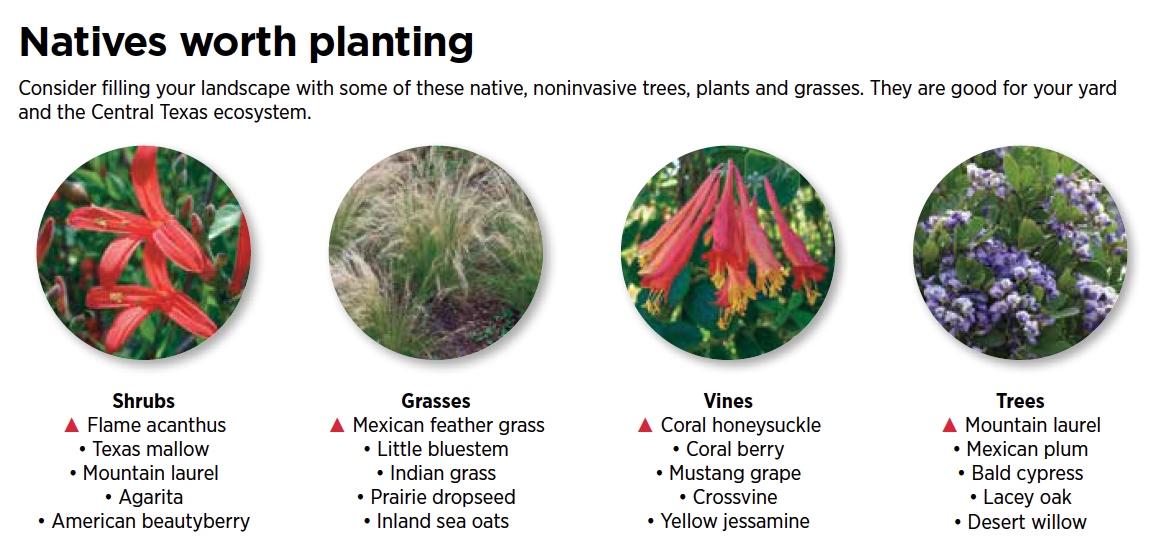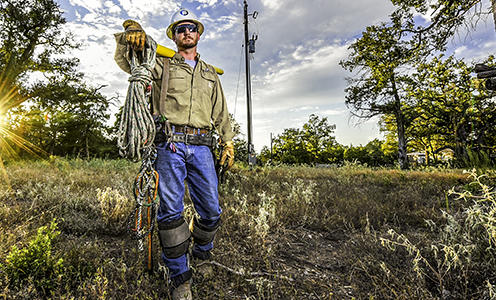The cooperative way
Recent news
Being a cooperative member has its advantages
It's National Cooperative Month – a time to celebrate you, the members of the co-op!
A group of neighbors banded together and organized Bluebonnet Electric Cooperative more than 83 years ago. They worked together for the benefit of the whole community, and the newly established electric lines helped power economic opportunity in our community.
As a utility, we provide safe, reliable and affordable energy to our members. But as a cooperative, we are also motivated by service to the community rather than profits. Among the advantages to being a Bluebonnet member are:
- You are a member, not a customer, which makes you a partial owner of the cooperative.
- You elect the members who lead the cooperative — the board of directors — at Bluebonnet’s Annual Meeting on the second Tuesday of every May.
- Bluebonnet members get capital credits every year, which are much like a return on dividends.
- We support the communities we serve, because we live here, too.
- Every year we provide scholarships to students in Bluebonnet's service area and sponsor numerous nonprofit groups and events.
This month and every month, we’re so happy to have you as a member of Bluebonnet Electric Cooperative. Keep an eye on our social media for cooperative stories, videos and giveaways. Plus, learn about your cooperative benefits here.
We asked our members to share some of the things they like about being a cooperative member. Here are some of their comments:
"We have had trees fall on our power lines on more than one occasions during storms. The response is phenomenal and we adore our linemen!!!!"
- Christina Murdock-Gill, Bluebonnet member in Brenham
"I love bluebonnet because of the immediate customer service response time we receive when power goes out."
- Stephanie Locke, Bluebonnet member in Del Valle
"Thank you to all BEC employees! We have always had questions answered and quick response when needed. Easiest app to use and appreciate the text updates when needed. Again thank you all."
- Jackie Gonzalez, Bluebonnet member in Fentress
"During ice storm I had power more than most of my co-workers. It was rolling outages but manageable. They notify of outages and handle them quickly. Good job and thank you."
- Melissa Kleihege, Bluebonnet member in Austin
"The service from Bluebonnet is fantastic, whether is is the customer service call center or the workers who work on the lines."
- Beanie Willis
"Bluebonnet is always quick to respond and I’ve used them for over 40 years. Would never change."
- Lurlene Roch, Bluebonnet member from Dale
"Ya'll keep us up to date on power outages and other things. Thank you."
- Laura Bohmfalk
"Love the Bluebonnet application glad BB embraces the technology!"
- Connie Fullick, Bluebonnet member in Paige
"I love being a member because ya are dependable, fast to respond to outages, great customer service, and fair pricing. Keep up the great work."
- Melinda Garza, Bluebonnet member in San Marcos
"I did not catch her name last week but my son called to get his elec turned on as his roommate had it disconnected. The young lady emailed him all the necessary paperwork & let him know it would be on by 5pm. She was exceptionally nice & handle him (he was upset there was no power & he had a big dog in the house) needless to say his power was on with in 3hrs of his call...I can not thank you enough for your rocking customer service."
- Angela Smith, Bluebonnet member in Maxwell
"The last outage I was kept updated and they worked quickly to fix the issue…even going in the rainy woods to find the issues when it was almost dark!"
- Tia Najvar
"Updates! So appreciative of the level of communication when things go wrong. And for keeping our power on during the snow storms!!"
- Nicki Dunn Morgan
"I appreciate the awesome customer service and the friendliness of the customer service staff that I always receive. And the notifications from BEC when we are having outages."
- Dora Dynette Gonzales, Bluebonnet member in Bastrop
"Great updates, easy to use app."
- Staci Klekar, Bluebonnet member in Brenham
"Always get the job done night or day"
- Johnnie Eckert, Bluebonnet member in Brenham
"We appreciate the prompt updates posted on social media during outages. We know right where to go for info!"
- Austonia RV Resort and Community, Bluebonnet member in Austin
"Always great service and friendly staff."
- Charles Funk, Jr., Bluebonnet member in Bastrop
"When I see a Bluebonnet member, they Light up!"
- Lucy Faz, Bluebonnet member in Bastrop
"Always great service"
- Deborah Deleon Olson, Bluebonnet member in San Marcos
"You send out updates before we can even report a problem most of the time and All issues are always fixed faster than the estimated response time. Thank you for keeping the lights on!"
- Holly Siegmund, Bluebonnet member in Lexington
"I love all the love they show our Community. We are truly blessed"
- Donna Bartsch, Bluebonnet member in Red Rock
"Bluebonnet is dependable, responsible, always doing the best for its members. I still can't believe how fast they restored the electricity after the 2011 and 2015 fires, for which I'm very grateful."
- Nancy Price Koudelka, Bluebonnet member in Smithville
"Dependable, Great Service, Very Friendly and Extremely Considerate for their customers!"
- Michael Pease, Bluebonnet member in Bastrop
"Great customer service, they really care about their customers and restoring electricity as quickly as possible. Thanks for all you do!"
- Janice Becker, Bluebonnet member in Giddings
"Appreciate the reliable service and the great customer service."
- Kenneth Barnard, Bluebonnet member in Paige
"Always friendly. Great services."
- Theresa Sanders Kettler, Bluebonnet member in Brenham
"Great service, always keeping us updated in an outage and quick to return power."
- Kimberly Weldon Abke, Bluebonnet member in Chappell Hill
"Reliable and OUTSTANDING customer service for many years… my husband and I brag all the time about how quick the response is to power outages… we were blessed during the February freeze to only lose power for about 3 hours and even then a truck was on our road within minutes of notification.
I have always appreciated employees being ready to answer any questions we have.. i was able to ask a question about a tree limb we were concerned about because over a power line… we were told put in a work order… we were also told at that time that one tree we had near road will be taken out by bluebonnet!![]()
To know our membership to the co-op is being put to use in such a wonderful, stress relieving way is amazing."
- Emily McLoud
"Bluebonnet is very concerned about hazards that trees pose to power lines and promptly take care of them."
- Robin Barcelo Powell, Bluebonnet member in Bastrop
"We have been members since the late ‘80s. Why do we love Bluebonnet? Because in this crazy world where things change without warning, Bluebonnet has remained a constant. The service. The standards. The easily recognizable commitment. One of my favorite moments was entering a restaurant one day when some Bluebonnet workers were exiting and I got to tell them personally how much we appreciate everything they do for everyone."
- Mary Sariti Comerford
"The best rural electric company. Rates up there with Xcel energy with restoring power and upgrading their infrastructure!"
- Gilbert Zamora, Bluebonnet member in Bastrop
"Love that if power goes out. Notifications and time fixed. Quick Fix. Great Service!!"
- James Kellam, Bluebonnet member in Bastrop
Test your knowledge of friends and foes in Central Texas landscapes
By Addie Broyles
They seemed like good ideas at the time.
Remember the Chinaberry tree in your parents’ backyard? Who didn’t have a thick privet hedge for privacy? And what’s so bad about a backyard full of Bermuda grass?
The bark scale and lone star tick are high on the bad-bug list in Central Texas. Do you know what they look like?
Our quizzes test your knowledge of undesirable plants and insects in our landscapes. Most are classified as invasive species, which are nonnative species that are bad for the environment, economy or your health. Others may not make the invasives list, but can still present problems in area lawns and fields.
It can take time to fully understand problems with a species, said Mike Arnold, director of The Gardens at Texas A&M University and a professor in the university’s Department of Horticultural Sciences.
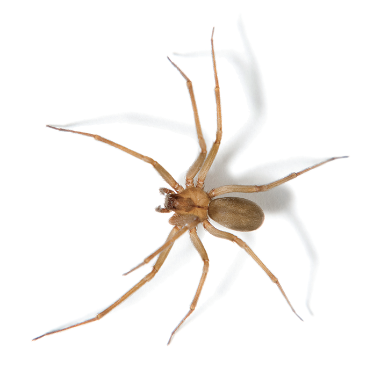
We’re talking about “aggressive or adaptive plants,” he said. Invasives can outcompete native species and cause a devastating ripple effect in the ecosystem and the industries that rely on it. They cost the United States $137 billion annually, according to the Texas Invasive Species Institute in Huntsville.
Some of the most economically harmful invasive species of plants and creatures are in Texas lakes. Plants such as giant salvinia, water hyacinth and zebra mussels hurt the local ecosystem, cause millions of dollars in damage to water treatment plants, and cause lost boating and tourism revenue on heavily affected lakes.
When a region loses its natural diversity, it is more susceptible to diseases and harmful pests, too.
“As we experience global climate change, invasives are going to put increased physiological effects on these ecosystems,” Arnold said. “When an extreme cold snap kills a certain plant, it creates opportunities for plants that weren’t previously invasive to become a problem.”
Test your knowledge of the plants and bugs (and one worm) that make the nice and naughty lists in area gardens and fields with our quizzes. Plus, learn what native plants can best replace less-desirable ones in your landscape.
The Great Central Texas Plants Quiz
Is it good for your garden, or will it sow destruction?
It’s time to test your knowledge of what’s growing in your landscape or pasture, and learn a little more about plants in our region: Are they dependable natives or destructive interlopers?
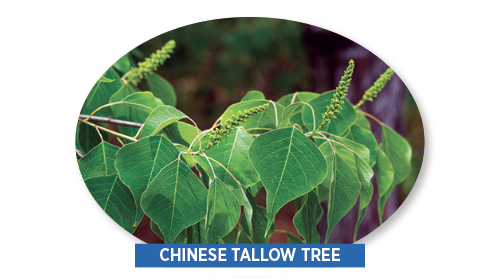 1
1
__________, an invasive tree that originated in China, grows in the Bluebonnet region. Long used as a landscaping tree, it became widespread in the 1950s. It crowds out native plants with its deep taproot and tolerance for drought.
A. Chinaberry tree
B. Heavenly bamboo
C. Chinese privet
D. Chinese tallow tree
Answer: D
The Chinese tallow trees in our area were introduced by the U.S. government as a source of seed oil for soap. Also known as “popcorn trees,” their waxy seeds look like a favorite movie snack. But don’t eat them. They’re poisonous!
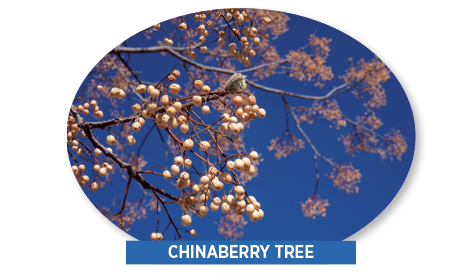 2
2
Which two of the following are true about the chinaberry tree, a member of the mahogany family, native to China, Indonesia and Australia?
A. It was brought to the United States in the late 1700s by a French botanist.
B. It’s not bad for planting because it provides shade.
C. Seeds can be poisonous to people and pets, and birds can get intoxicated by eating rotting seeds.
D. It is found in all 50 states.
Answers: A and C
Even though these fast-growing trees are shade kings, chinaberries are invasives that sprout so many trees under their canopy they can become a landscaping mess. They are sold in many nurseries in the South, because they can’t withstand cold climates. Chinaberry has yellow seeds and violet flowers. It is similar to the Western soapberry, which is native to Central Texas.
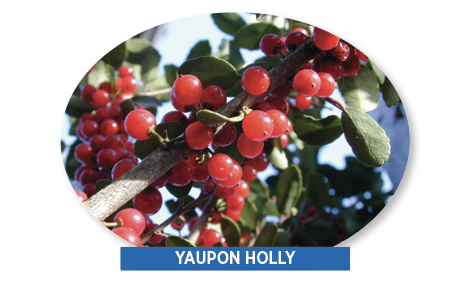 3
3
Privets — also known as Ligustrums — are still popular hedge plants in many Bluebonnet-area yards. There are many varieties, but the Chinese privet can quickly take over a Central Texas ecosystem. Which of these is a better shrub alternative that also happens to be the only native-grown source of caffeine in North America?
A. Yaupon holly
B. Cenizo
C. Texas mallow
D. Flame acanthus
Answer: A
The yaupon holly is a better choice. The woody evergreen shrub or small tree can grow up to 25 feet, and female plants are known for their bright red berries. They are native to the eastern, southern and southwestern states. Yaupon holly’s leaves and twigs can make a caffeinated tea you may find for sale at local farmers markets. The other plants on the list are also native and make excellent substitutes for the pestilent privet.
4
Bermuda grass is still popular as a turfgrass, but it is also considered a weed. It is one of the most common aggressive grasses in Texas, likely arriving from Africa. It can handle Central Texas heat and droughts, creeps into crops, covers the soil and is hard to remove. Consider planting this native turfgrass instead:
A. Zoysia
B. King Ranch bluestem
C. St. Augustine
D. Buffalo grass
Answer: D
The only native turfgrass on the above list is buffalo grass, which once fed millions of grazing bison from Mexico to Montana. It doesn’t require a lot of water. Zoysia and St. Augustine grasses are popular but aggressive and can spread rapidly. King Ranch bluestem, also aggressive, came from Europe and Asia in the 1920s and was planted on the famous King Ranch in South Texas in the 1930s.
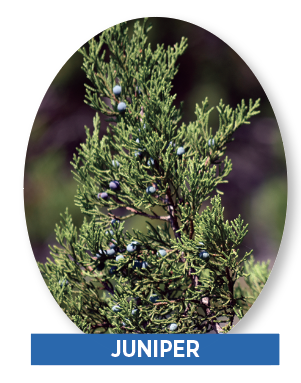 5
5
True or false: Juniper trees are among the state’s worst invasive tree species.
Answer: False
Junipers, as well as cedar trees, are responsible for many Central Texans’ allergies from December through February, but both are native to Texas. In fact, junipers have been growing here for centuries. Many people mistake junipers for cedars. The two types of trees have a similar smell, but junipers belong to the cypress family and cedars to the pine family. Ashe junipers, though widespread, provide food for birds and butterflies, and forage for mammals. One common juniper, however, is named "native redcedar," which may contribute to the confusion.
6
Native plants in many rivers, lakes and creeks of Central Texas have been getting pushed out by invasives in the last 20 years. Conversely, which two of these water plants should you be happy to see in your water garden?
A. Cow lily
B. Alligator weed
C. Hydrilla
D. Humped bladderwort
Answers: A and D
Cow lily and humped bladderwort are good choices if you have a lake or pond. The bladderwort is attractive, plus it can capture and consume insects. Avoid alligator weed and hydrilla at all costs. Hydrilla is right up there with water hyacinth and giant salvinia as one of the most damaging invasive water plants in the Bluebonnet region, including in Lake Somerville and the Fayette County Reservoir. Hydrilla can suffocate other plants, fish and some animals.
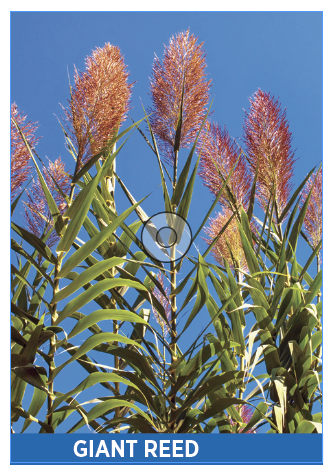 7
7
This aggressive invasive, native to East Asia, can tower more than 20 feet tall in watery areas throughout the Bluebonnet region, including in ditches alongside roads. It grows thick roots and absorbs water that could benefit native plants.
A. Giant reed
B. Heavenly bamboo
C. Giant hogweed
D. Salt cedar
Answer: A
Although all of the above are invasive plants, the giant reed is perhaps the biggest threat. It can burn quickly and spread via pernicious, hard-to-kill rhizomes. The clumps of reeds are hard to dig out of the ground. Many folks resort to a glyphosate herbicide.
8
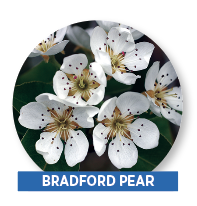 What flowering tree that your parents might have planted turned out to be a bad idea (and not just because it stinks in spring)?
What flowering tree that your parents might have planted turned out to be a bad idea (and not just because it stinks in spring)?
A. Magnolia
B. Bradford pear
C. Crepe myrtle
D. Oleander
Answer: B
It can look nice, but it’s the weedy Bradford pear that was introduced from China in the early 1900s. Some folks still plant it, even though it smells terrible when it flowers. Its branches break easily in storms. The other three flowering trees on the list — magnolia, crepe myrtle and oleander — look nice and are popular, but they can outcompete native trees for growing room. Lady Bird Johnson would have preferred you plant a Texas redbud.
9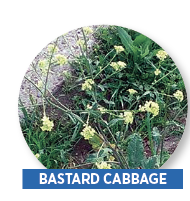
Don’t let their cute little yellow flowers fool you. This plant is choking out Texas’ beloved wildflowers.
A. Rue
B. Horsetail
C. Beggar’s lice
D. Bastard cabbage
Answer: D
Noxious, weedy bastard cabbage from southern Europe and northern Africa, also known as turnip weed or wild rape, smothers native plants and can quickly cover a field. Nativized rue and horsetail are fine plants to grow in your yard. Beggar’s lice is native, but it can fill your yard with burrs in summer.
10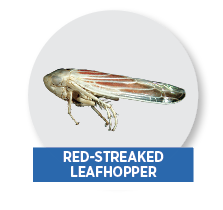
These two invasive species go together like grackles and parking lots.
A. King Ranch bluestem and red-streaked leafhopper
B. Hackberry trees and cankerworm caterpillars, also known as inchworms
C. Agarita bushes and carpenter bees
D. Greenbrier vine and possums
Answer: A
Bluestem and the leafhopper, which may resemble a grasshopper, are both invasive. The insect feeds on native and nonnative grasses, and sugarcane crops. Hackberry trees and agarita bushes are weedy, but they’re native to Texas and are food sources for wildlife, including cankerworm caterpillars and carpenter bees. The nativized greenbrier vine — originally from the eastern United States, just like the possums that feed on it — isn’t as much of a pest as the poison ivy that usually grows near it. By the way, grackles are native, too. Parking lots, not so much.
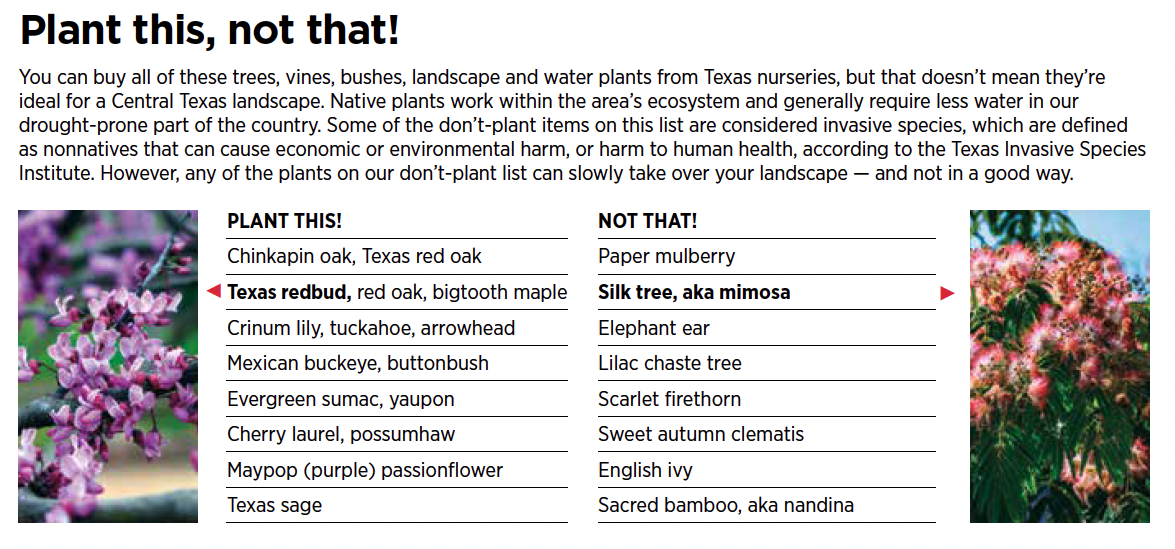
Good bug or bad bug? Take the quiz.
Stop before you squish! That insect could be good for your landscape. Most bugs are good — about 97% of them, according to some experts. But there are some insects that cause more harm than help to people, animals or the environment. Beneficial bugs help pollinate plants and crops, aerate soil, balance the ecosystem, recycle organic matter and even eat bad bugs. Test your knowledge of native, nonnative and invasive bugs, and one worm (it’s so bad, we couldn’t leave it out).
1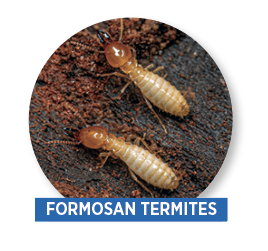
Formosan subterranean termites have been eating lumber in Texas homes since at least the 1950s. Why are they worse than regular termites?
A. They build huge aerial nests.
B. They reproduce faster than other species.
C. They secrete a foul odor.
D. They resist all forms of treatment.
Answers: A and B
Formosan termites are the most destructive kind, causing more than $1 billion in damage to U.S. homes annually. There are many ways to keep termites at bay: Get information from Texas A&M’s AgriLife Extension website: Go to citybugs.tamu.edu/factsheets/ and search for "termites." If you’ve already got termites, Formosan or not, call in professionals to use termiticide, fumigation and/or continual baiting until the colony is eliminated.
2
Which three of these ants should you leave alone in your yard?
A. Tawny crazy ants
B. Red fire ants
C. Pyramid ants
D. Leafcutter ants
E. Harvester ants
Answers: C, D & E
Pyramid, leafcutter and harvester ants are all native. They might carve a path in your grass or make a bald spot near their nest, but they are important to our ecosystem. Invasive tawny crazy ants and red fire ants are decimating our native ant populations. Texas A&M’s fire-ant research and management project recommends using pesticide baits from late August through October.
3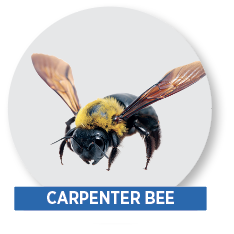
True or false: Honeybees are a native species that thrives on Texas wildflowers.
Answer: False
There are more than 1,000 species of native bees in Texas, but honeybees are not one of them. Honeybees are native to Europe, Africa and the Middle East, although they’ve been in North America since the 1600s. “Hardcore naturalists aren’t fans of honeybees, but they don’t disrupt native bees, to our knowledge,” said Molly Keck, an integrated pest-management program specialist with Texas A&M University who hosts two podcasts on Texas pests. Bees native to Texas include bumblebees, carpenter bees and sweat bees.
4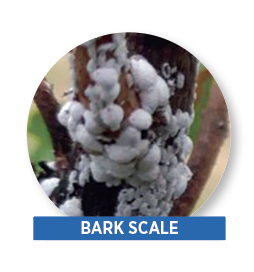
Love your crepe myrtles? Watch out for this tiny insect causing big problems in Brazos, Williamson and Travis counties.
A. Bark scale
B. Varied carpet beetle
C. Confused flour beetle
D. Cochineal scale
Answer: A
Some scales, like cochineal, which lives on prickly pear cactus, are native, but the bark scale is not. After emerging from clusters of felt-like egg sacs, these tiny, oval-shaped insects with shell-like coverings can quickly give rise to a dark, sooty fungus that blackens crepe myrtle bark, making the tree susceptible to disease. Flour and carpet beetles are troublesome for homeowners, but they aren’t a problem for trees.
5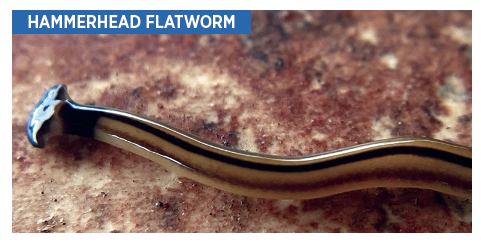
Hammerhead flatworms, recently spotted in Houston, are among the fastest-spreading, most troubling invasive species in Texas because:
A. They travel easily and quickly via wet ground, including sidewalks, roads and waterways.
B. They can irritate your skin and can make pets sick if ingested.
C. They can regenerate parts of their body, so stepping on one could just create two worms.
D. They eat other species of worms.
Answer: All of the above
Earlier this year, the state’s Invasive Species Institute made a special appeal to folks in Central Texas to be on alert for this flatworm with a hammer-shaped head that came to America 100 years ago from Southeast Asia. It reproduces and travels quickly, and harms humans and animals, so take a photo of it before you kill it by putting salt and/or vinegar or citrus oil on it. Email your photo to invasives@shsu.edu. Be sure to tell them where you found it.
6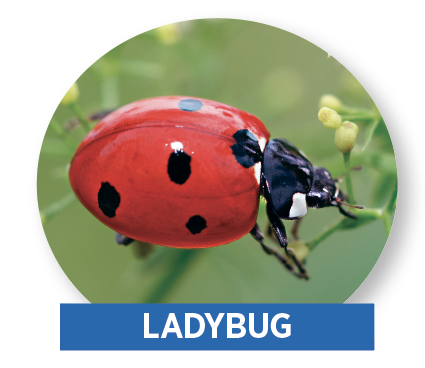
Which is the native: a ladybug or a ladybird beetle?
Answer: Ladybug
Although the two look similar, ladybird beetles, native to Asia, were introduced by the U.S. Department of Agriculture in the 1960s to control agricultural pests. They aren’t invasive, though, and even though they can swarm inside your home when it gets cold, or bite to protect themselves, they are good for your garden. The beetles eat aphids and mites, just like ladybugs.
7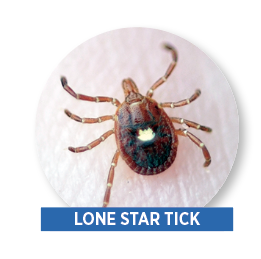
This insect’s bite can cause humans to have a sudden onset of an allergy to red meat.
A. Asian tiger mosquito
B. Damsel fly
C. Lone star tick
D. Common bed bug
Answer: C
The lone star tick — named not for Texas, but for the white star on its back — can cause alpha-gal syndrome, which can create a lifelong allergic reaction to red meat (think hives, itching, swelling and shortness of breath). These ticks, more common in the northeast United States, are starting to show up more in Texas, including in Fayette, Burleson and Austin counties.
8
Spiders might scare you, but you shouldn’t kill most of them: They are good for the environment. Which two of these should you leave alone (or carefully move outside if one is in the house)?
A. Wolf spider
B. Brown recluse spider
C. Orb spider
D. Brown widow spider
Answer: A and C
Wolf and orb spiders are two native species that do a lot of good in an ecosystem: They eat smaller insects and they're eaten themselves by birds. The brown widow is nonnative and, though less dangerous than its native cousin, the black widow, it still packs a venomous bite. The brown recluse’s bite can cause all kinds of problems, including fever, nausea and even necrosis.
9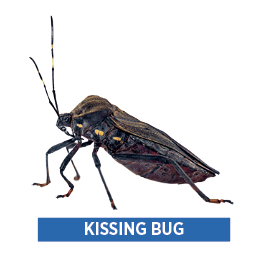
There are more than 150 species of assassin bugs in the United States, but this is the only one to worry about because it can carry a parasite that causes Chagas disease, which can be life-threatening.
A. Ambush bug
B. Milkweed assassin bug
C. Giant wheel bug
D. Kissing bug
Answer: D
Also known as the cone-nosed bug, kissing bugs can bite humans (and dogs) and transmit a parasite that causes the potentially fatal Chagas disease that can lead to flu-like symptoms, diarrhea, vomiting and a rash. Cases have been reported in Fayette, Lee and Travis counties. The other three assassin bugs are fine: They eat soft-bodied insects that might chew up your crops.
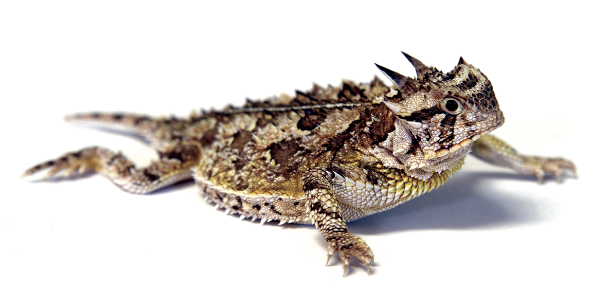
Did you know?
The Texas horned lizard, often called a “horny toad” or “horned frog,” is now considered a threatened species in Texas due to habitat loss and the decline of native ants, in particular the harvester ant.
Fun fact: In 1928, a horned lizard that was said to have been sealed in a time capsule
for more than 30 years was found alive after all that time. The lizard, named Ol’ Rip, went on tour, including a stop at the White House to meet President Calvin Coolidge, and inspired a rush on horned lizard sales.
